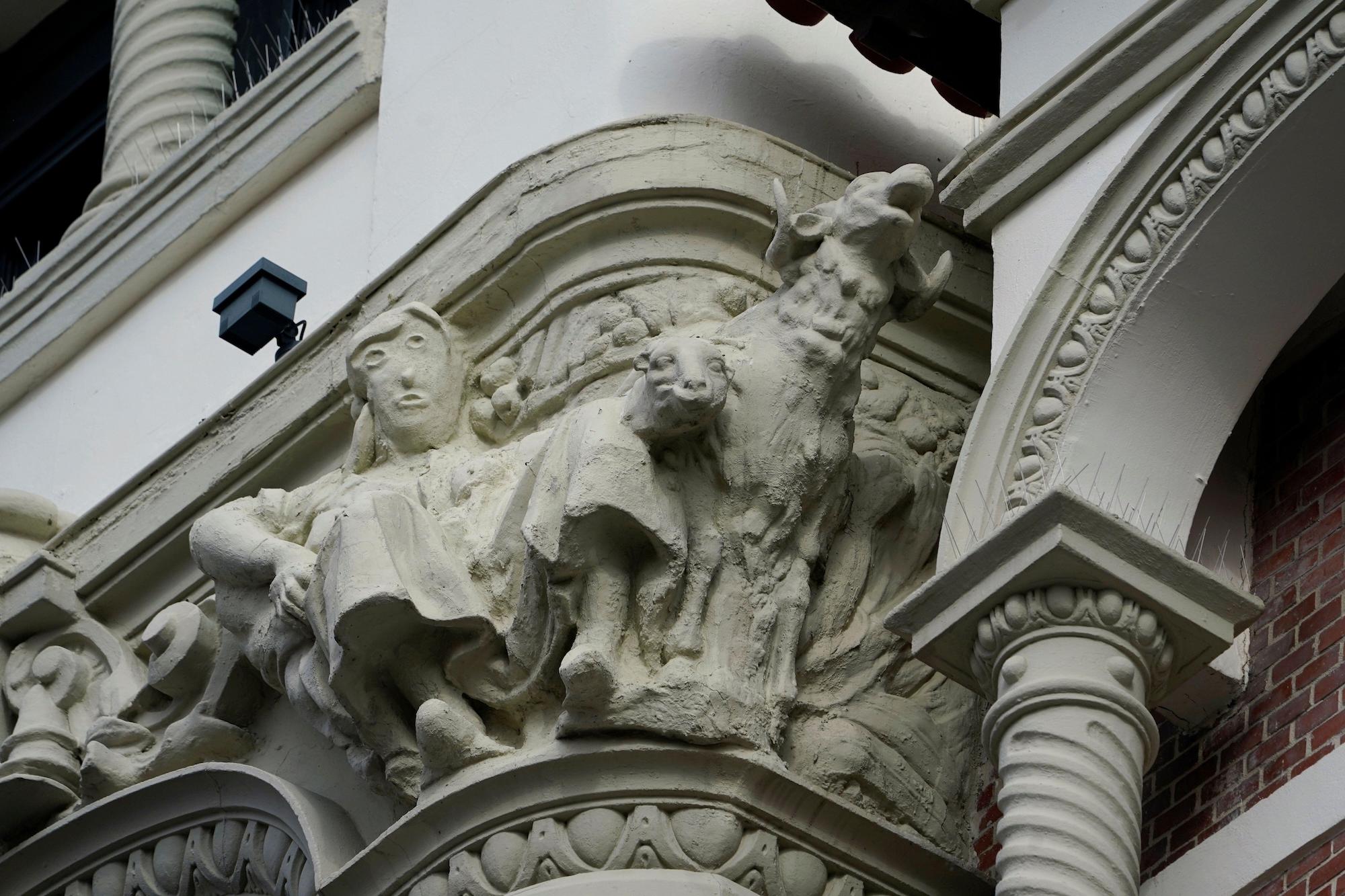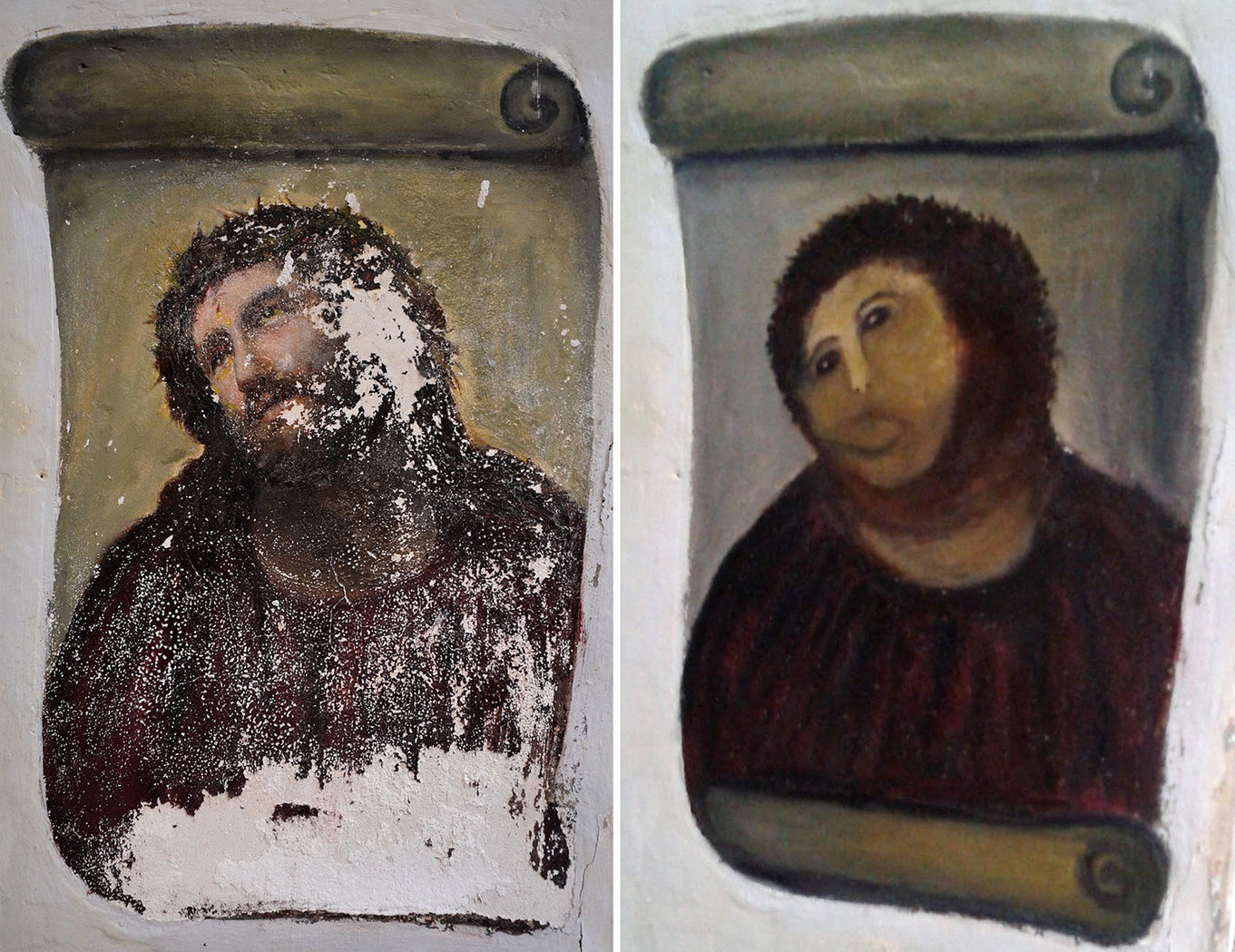
I have an oddly clear memory of watching the Mr Bean movie on a school trip coach, sometime in the early noughties. Particularly, the memory is of the scene in which Mr Bean sneezes on the great nineteenth-century American masterwork, Whistler’s Mother, and tries to wipe his snot off the painting. In typical Bean form, every subsequent move he makes only causes more and more terrible damage to the canvas.
The reason I remember it so vividly is that I felt almost unable to watch it. The exponential growth of his errors and the terrible consequences surely soon to befall him were agonising to me. But I also remember being unable to look away—not just because I was trapped on a coach with it, but because of a dark glee that was mixed in with the horror. There’s something delicious about a ruined artwork, inspiring its own special category of schadenfreude.

The last ten years have seen a curiously large number of botched art restorations. There was the infamous monkey Ecce Homo, the Playmobil Saint George, the less-than Immaculate Conception in Valencia. Still curiouser, many of them have happened in Spain (although the Ontario frog prince baby Jesus of 2015 also deserves a mention). There seems to be a whole substratum of society, from furniture makers to tobacco shop owners to local grandmothers, confident enough in their abilities to return a piece of art to its former glory; no prior training, just vibes. And we only hear about the tip of the iceberg. There’s a thrilling likelihood that there are many hundreds more luridly awful doctored statues around the world that simply never get reported to the press or are in private ownership.
But last month, another botched restoration of a piece of public statuary made itself known to the world, on the offices of a bank in a Spanish city called Palencia, a restoration so laughably awful that it immediately entered the pantheon of great art repair fuck-ups. It came to light when an artist who lives near the building was tipped off by a florist that something distressing had happened to the statue on an ornately decorated 100-year-old office building that is well known in the city. He went to see it for himself, and was sufficiently appalled by what he found that he posted before and after photographs on Facebook.
“There’s something delicious about a ruined artwork, inspiring its own special category of schadenfreude”
The sculpture was part of a larger relief originally commissioned by the Catholic Agrarian Federation to adorn the top of the building. It showed a shepherdess tending her sheep. But now, the head of the woman had been rendered unrecognisable. The new face is little more than a lump of rock, with a pair of crude, dead eyes making a bid for freedom from each other, a nubbin for a nose, primly pursed lips and a patchwork of several different hairstyles jostling for primacy. Instead of gazing with pastoral serenity at her flock, now the face turns its cow-eyed gaze on the world below, looming hand on thigh at passers-by with the menacing air of someone about to stand up from a pub garden chair and punch a stranger in the back of the head.
The snowman’s face simplicity of the image means you can see more or less anything you like in the carving. It is all things to all men. Donald Trump? Yes. Wallace of Wallace and Gromit fame? Why not. Mr Potato Head? Sure, I see it. In response to outcry about the statue, Spain’s Professional Association of Restorers and Conservators (ACRE) tweeted that the job was “NOT a professional restoration”. One theory about the statue’s skull having alarmingly different dimensions to the original is that the head may have fallen to the ground and been replaced in a great hurry. It is still not known who is responsible for the restoration.

“These are not acts of vandalism and wouldn’t be half as interesting if they were. It’s the good intentions behind them that make them so delightful”
Part of why the sculpture is so striking is the richness of the imagined backstory. At what point did the restorer have their first Mr Bean moment—realising that the damage they had already done was irreparable, and that they were now locked into the task of making it worse and worse? How did they feel as they continued to chisel away? What was thing that finally made them look upon their work, gather up whatever instruments of blunt force they were using and disappear into the night?
These are not acts of vandalism and wouldn’t be half as interesting if they were. It’s the good intentions behind them that make them so delightful, such perfect visual metaphors for the hubris of endeavour. The bathos of it, the aspirations to greatness dashed against the rocks of ineptitude. These artworks are often given referred to as the Ecce Homo of wherever they are made, after the original and greatest botch, the Borja Christ. It feels appropriate. Behold man, and the ever more elaborate failures of which we are capable.




